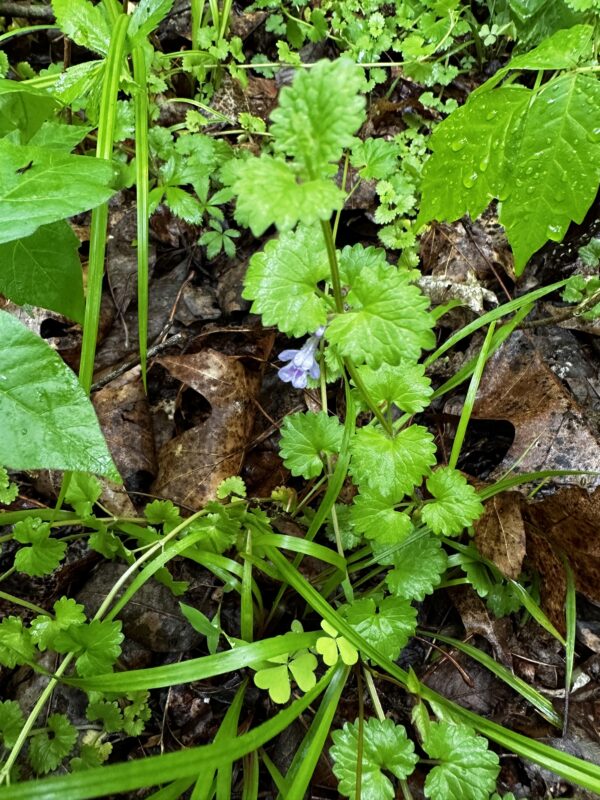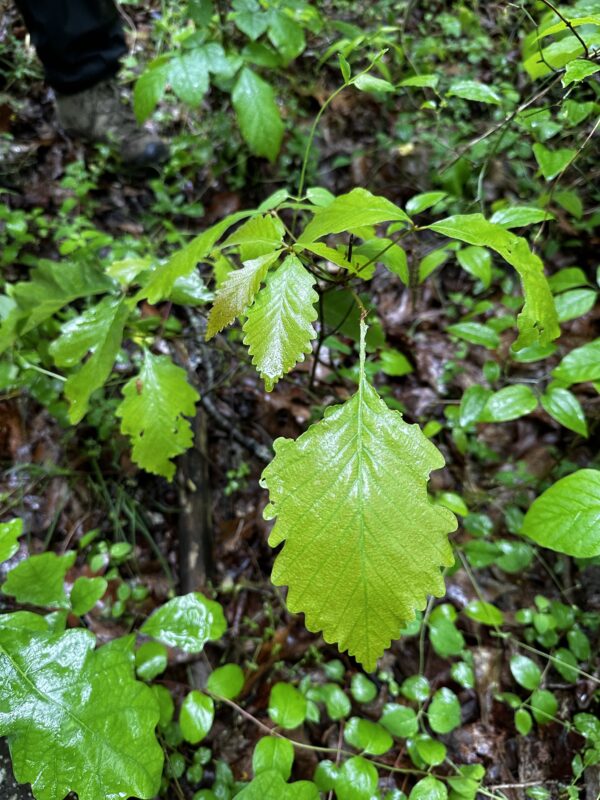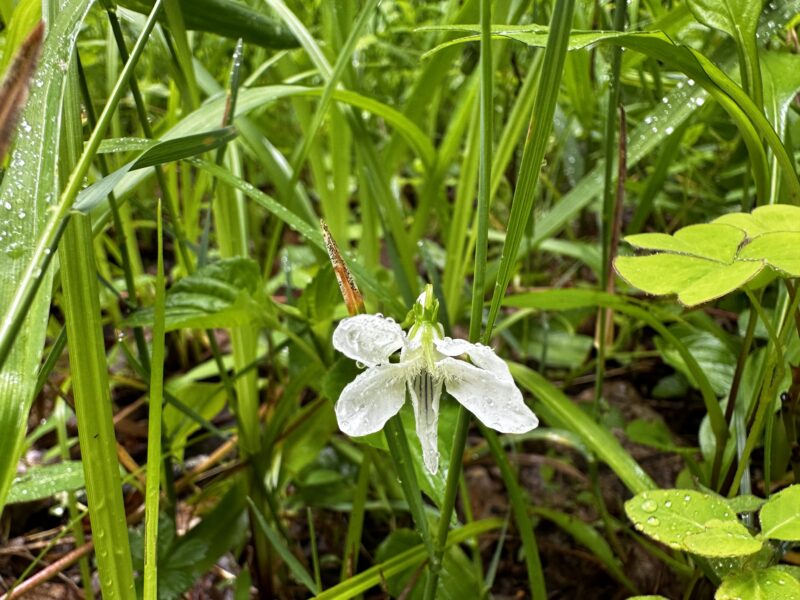Deep Woods, the Appalachian Gametophyte, and Ohio Geobotany
Acid-Loving Plants
Eastern Hemlock – Tsuga canadensis
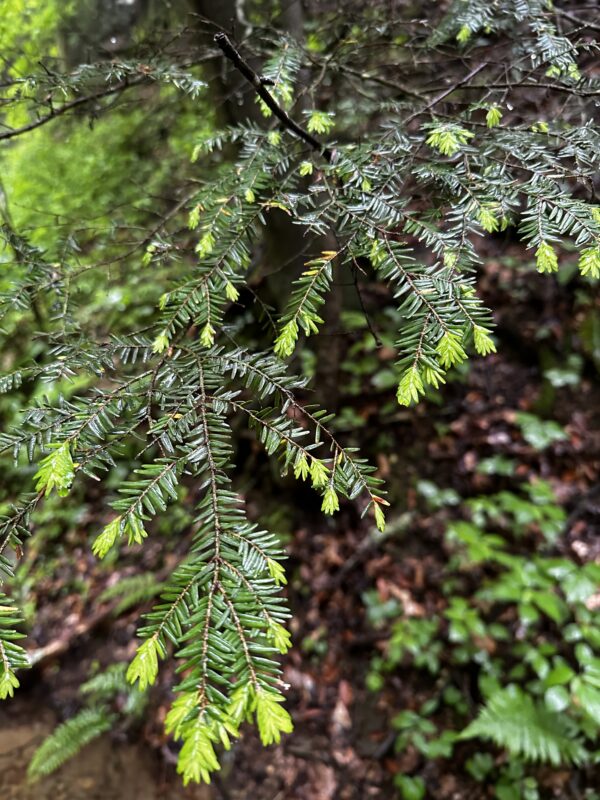
If there’s one thing Eastern Hemlock LOVES, it’s cool, moist valleys. That’s why this acid-loving plant is also found in areas of Ohio with less acidic soil. Not to be confused with poison hemlock, which is a member of the herbaceous plant family Apiaceae, Eastern Hemlock is a member of the pine family and has dark-green needles. Hemlock bark can be used for tanning hides, and the inner bark and leaves can be made into a tea. The bark is also astringent and has been used to treat bleeding wounds.
Sourwood – Oxydendrum arboreum
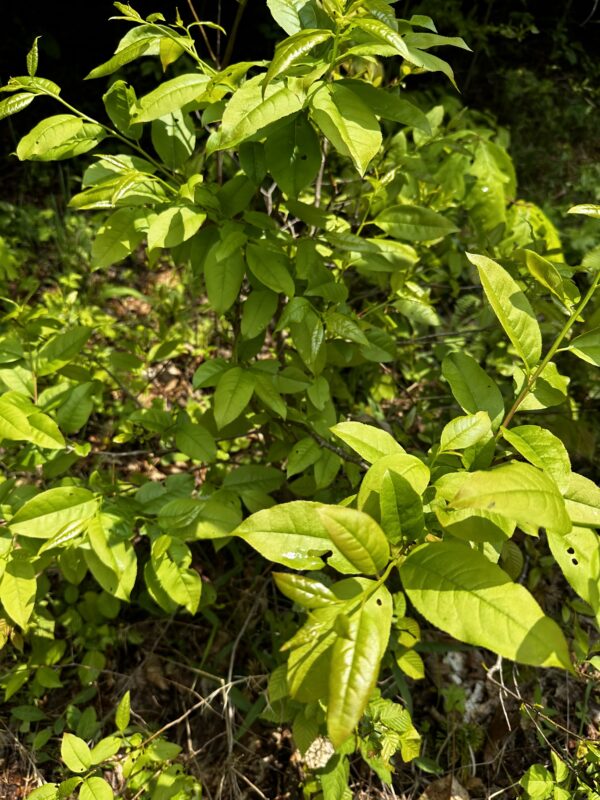
Sourwood trees have leaves that are alternate with toothed margins. The leaves taste distinctly sour (which makes me think it should be called the sourLEAF tree…). Sourwood prefers acidic, moist, and well-drained soil. This tree is sometimes called the lily-of-the-valley tree due to the drooping stalks of white flowers it produces, which are used by bees to make honey. Despite being sour, the leaves can be used to make tea which has been used in the past to treat diarrhea, indigestion, and dysentery.
Chestnut Oak – Quercus montana
The chestnut oak received its name due to the resemblance of its leaves to those of the American Chestnut. The leaves of the chestnut oak are alternate with crenate margins. This species prefers acidic, moist, and well-draining soil, although it tends to be found in rocky, dry soils since it can outcompete other plants that are not as well suited to these conditions. The bark of chestnut oak is high in tannins and can be used to tan hides. The acorns are soft and edible.
Deerberry – Vaccinium stamineum
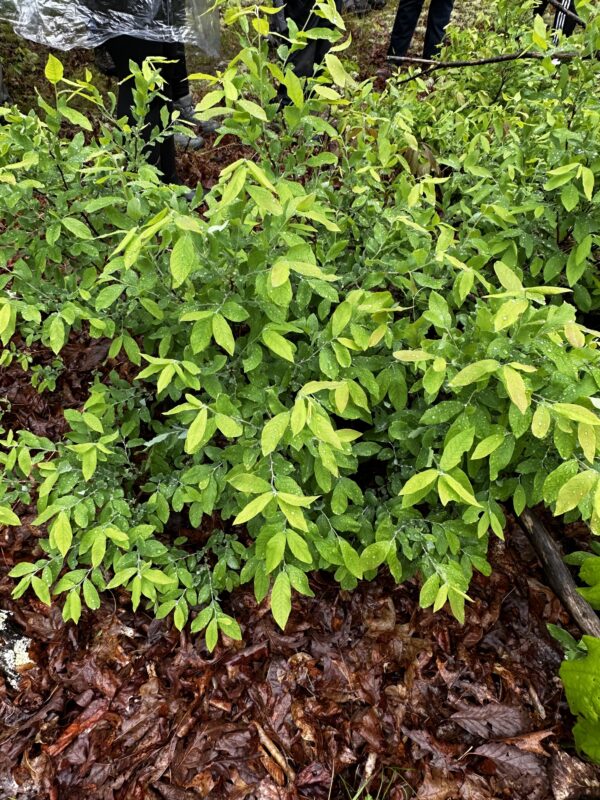
Deerberry is a deciduous shrub with leaves that are alternate with an entire margin. The leaves are also fuzzy on the bottom. Deerberry prefers soil that is acidic and well-draining. The fruit that deerberry produces is small and eaten by deer, birds, and small mammals. This fruit is also edible by humans and has been used in preserves and pie fillings in the past.
Ferns, more ferns, SO MANY FERNS!
Christmas Fern – Polystichum acrostichoides
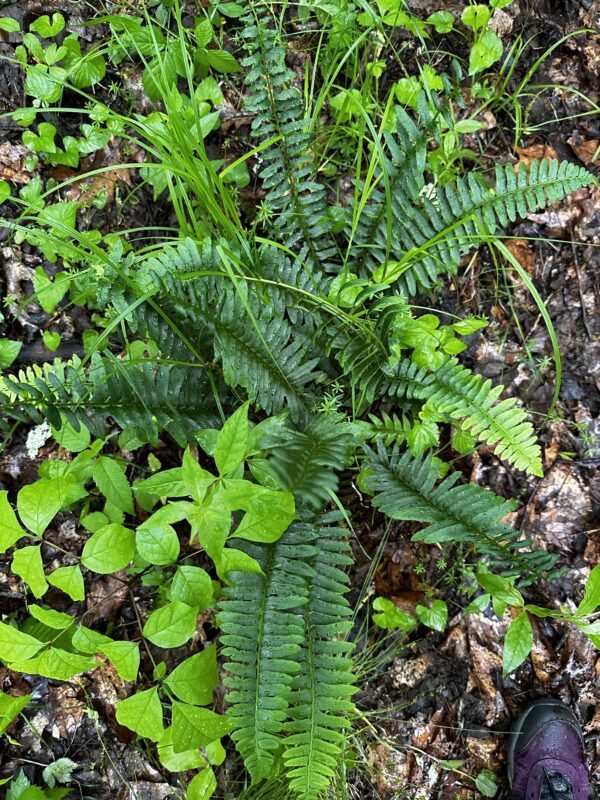
FROND TYPE: hemidimorphic
FROND DISSECTION TYPE: pinnate
INDUSIUM (SORUS) TYPE: N/A (not monomorphic)
Broad Beech Fern – Phegopteris hexagonoptera
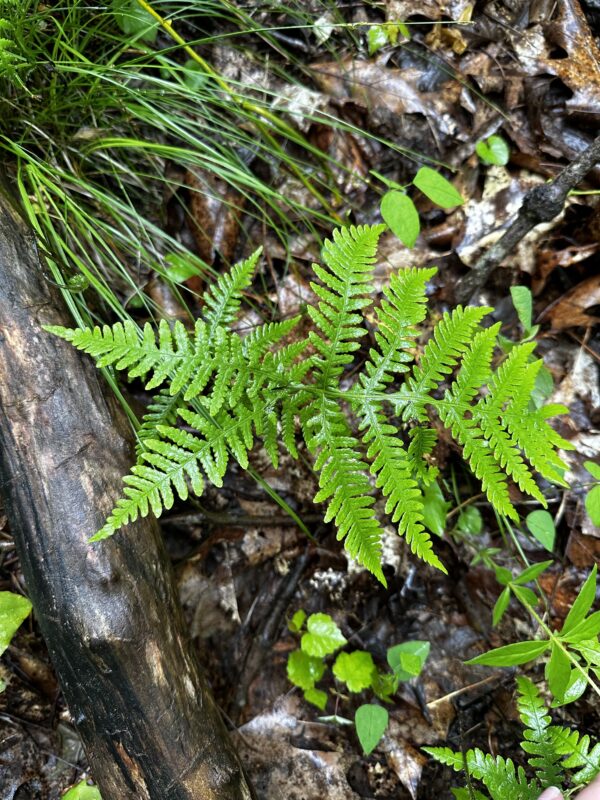
FROND TYPE: monomorphic
FROND DISSECTION TYPE: pinnate-pinnatifid
INDUSIUM (SORUS) TYPE: pelate
Cinnamon Stick Fern – Osmundastrum cinnamomeum
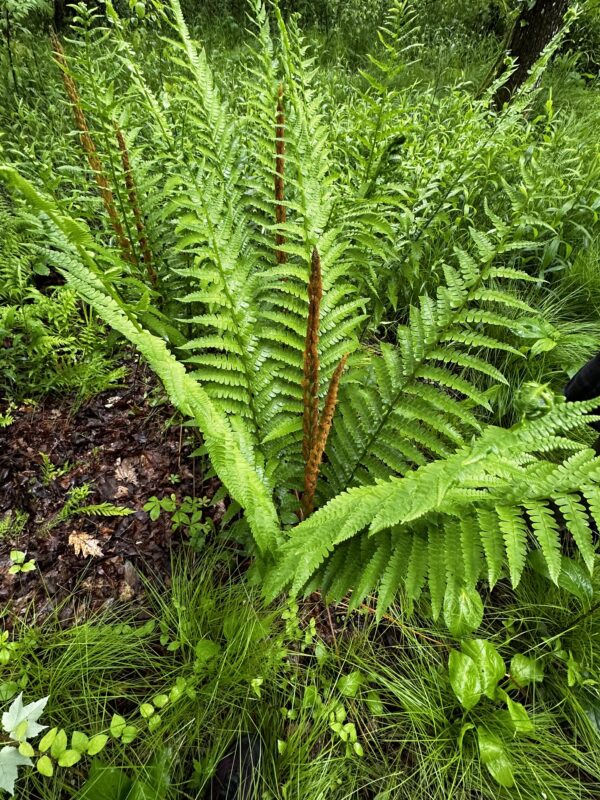
FROND TYPE: holodimorphic
FROND DISSECTION TYPE: pinnate-pinnatifid
INDUSIUM (SORUS) TYPE: N/A (not monomorphic)
Spinulose Wood Fern – Dryopteris carthusiana
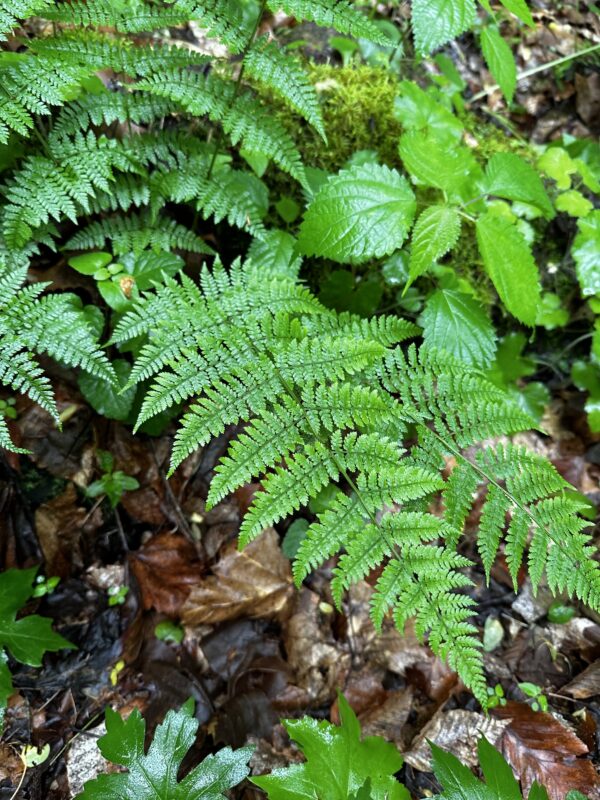
FROND TYPE: monomorphic
FROND DISSECTION TYPE: tripinnate
INDUSIUM (SORUS) TYPE: reniform
Appalachian Gametophyte – Vittaria appalachiana
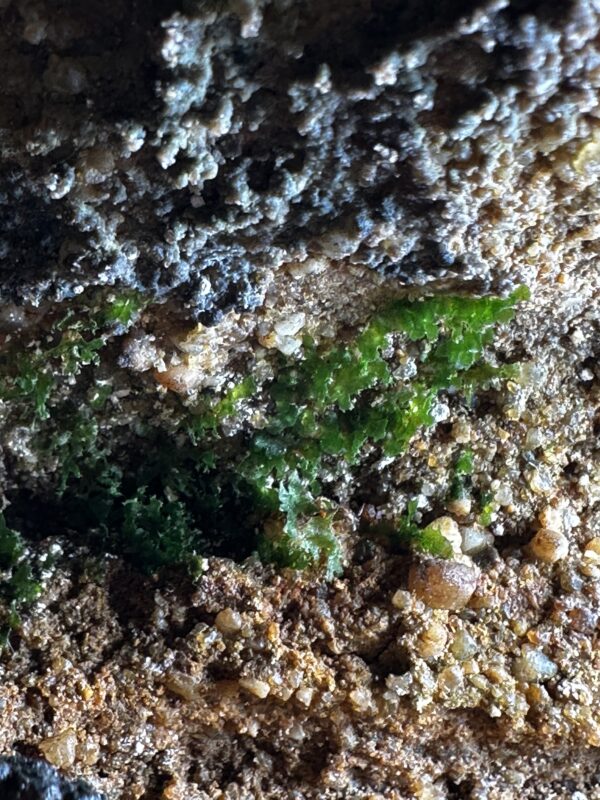
Typically, ferns have a life cycle that consists of alternating sporophyte and gametophyte phases, with the sporophyte phase being dominant. Vittaria appalachiana, or the Appalachian gametophyte, is a peculiar species of fern that lives exclusively as a gametophyte. In fact, mature sporophytes of Vittaria appalachiana have never been observed. Instead, the Appalachian gametophyte reproduces asexually through the production of gemmae, which are vegetative propagules. Fern gemmae are much larger than the typical spore, meaning they cannot be easily dispersed by wind and must be dispersed by water or animals, such as slugs. The limited dispersal capabilities of V. appalachiana are supported by the fact that the species is not present north of the last glacial boundary, but transplants to this area have been shown to be successful. Overall data suggests that the Appalachian gametophyte once possessed a fully functioning sporophyte, but lost this ability sometime during the last ice age. In “Unravelling the Origin of the Appalachian Gametophyte”, authors Pinson and Schuettpelz conclude that the current populations of V. appalachiana could not be sustained by long-distance dispersal from a tropical sporophyte source due to past allozyme studies and the truncated range of the species in southern New York. The most likely explanation for the wide range of V. appalachiana is spore dispersal by the species before it lost the ability to reproduce asexually.
Invasive Plants (Boo! Hiss!)
Multiflora Rose – Rosa multiflora
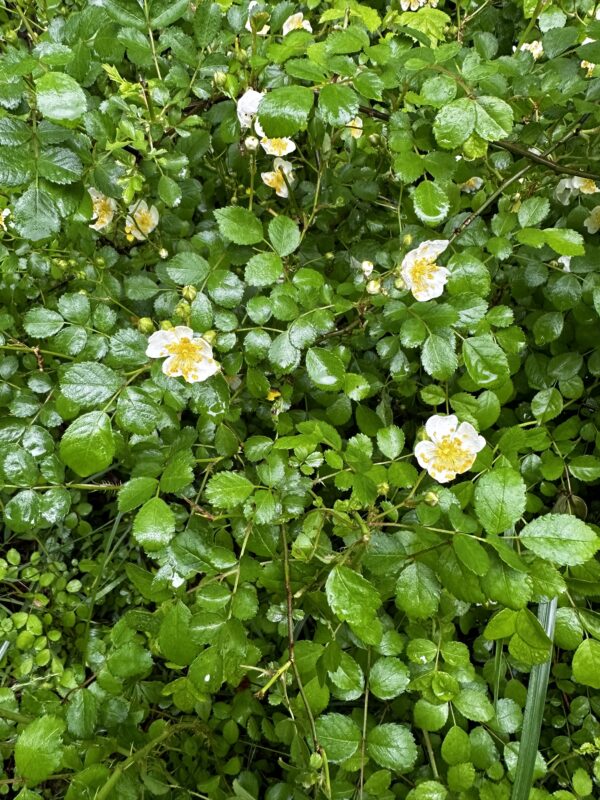
Multiflora rose is native to Asia. It was originally introduced to the United States in 1886 as an ornamental, and was widely planted as a “living fence” to control livestock. Multiflora rose spreads very easily due to its ability to tolerate a wide range of conditions. This is damaging to the local ecosystem as Multiflora rose can easily outcompete native species for space and resources. To control the spread of multiflora rose, the Missouri Department of Conservation recommends treating the plant with a 10-20% solution of Roundup herbicide.
(Sources: Center for Invasive Species and Ecosystem Health, Missouri Department of Conservation)
Japanese Stiltgrass – Microstegium vimineum
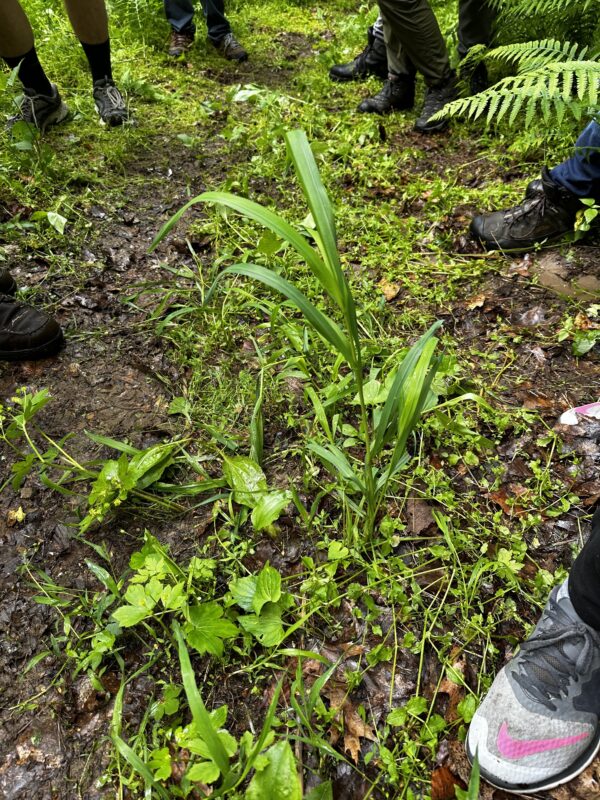
Japanese stiltgrass is native to Asia. It is believed that Japanese stiltgrass was introduced to the United States in the 1920s, as the grass was often used as packing materials for goods such as porcelain. Japanese stiltgrass is damaging to local ecosystems as it can displace and outcompete native species. To control the spread of this invasive grass, Missouri’s Department of Conservation suggests mowing or removing the plant by hand in early August, before the plants produce seeds. They also warn that the seeds can be easily transported by contaminated equipment.
(Sources: Center for Invasive Species and Ecosystem Health, Missouri Department of Conservation)
Plants with Zygomorphic Flowers
Cream Violet – Viola striata
Ground-ivy – Glechoma hederacea
